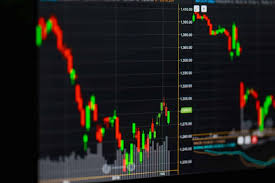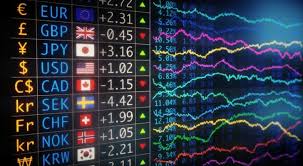
Ultimate Beginner’s Guide to Forex Trading
Welcome to the world of Forex trading, a thrilling venture in the financial markets that allows you to trade currencies from around the globe. Whether you’re looking to supplement your income or dive in full-time, this comprehensive guide will lay the groundwork for your Forex trading journey. For those looking for useful tools, consider checking out the forex trading beginner guide Trading App APK to enhance your trading experience.
What is Forex Trading?
Forex, or foreign exchange, is the market where currencies are traded. It is the largest financial market in the world, with a daily trading volume exceeding $6 trillion. Unlike stock markets, the Forex market operates 24 hours a day, five days a week, providing flexibility and opportunities for traders around the clock.
Understanding Currency Pairs
In Forex trading, currencies are traded in pairs—one currency is exchanged for another. The first currency in a pair is called the base currency, while the second currency is the quote currency. For example, in the currency pair EUR/USD, the Euro is the base currency and the US Dollar is the quote currency. The price indicates how much of the quote currency is needed to purchase one unit of the base currency.
Key Concepts in Forex Trading
1. Pips and Lots
A “pip” is the smallest price move that a given exchange rate can make based on market convention. Most currency pairs are priced to four decimal places, where the last decimal point is the pip. For example, if the EUR/USD moves from 1.1150 to 1.1151, it has moved one pip. In Forex trading, currencies are traded in “lots,” which refers to the quantity of currency units being traded. A standard lot consists of 100,000 units, while a mini lot is 10,000 units and a micro lot is 1,000 units.
2. Leverage and Margin
Leverage allows traders to control a larger position with a smaller amount of capital. For instance, if a broker offers a leverage of 100:1, you can control $100,000 with just $1,000. However, while leverage can amplify profits, it can also magnify losses, making risk management crucial. Margin is the amount of money required to open and maintain a leveraged position. Always ensure you understand how margin and leverage work before diving into trades.
3. Spread and Commission
The “spread” is the difference between the bid price (what buyers are willing to pay) and the ask price (what sellers are asking for). Brokers make money by charging this spread, and understanding this concept is essential for effective trading. Some brokers also charge a commission, which is a separate fee added to the spread.
Types of Forex Analysis
1. Fundamental Analysis

This approach involves analyzing economic indicators, news events, and other factors that can affect currency values. Reports such as GDP growth, employment numbers, interest rates, and inflation can influence market sentiment and trading decisions. Keeping an economic calendar can help traders stay abreast of important events.
2. Technical Analysis
Technical analysis focuses on historical price movements and trading volumes to predict future price movements. Traders use charts and various technical indicators (such as moving averages, RSI, and MACD) to identify patterns and trends, helping them make informed trading decisions.
Creating a Trading Plan
A solid trading plan is essential for successful Forex trading. It should outline your trading goals, risk tolerance, evaluation criteria, and trading strategies. Here are key components to include:
- Goals: Define what you want to achieve, such as specific profit targets or learning objectives.
- Risk Management: Determine how much capital you are willing to risk on each trade and set rules for maximum drawdown.
- Entry and Exit Strategy: Clearly outline your criteria for entering and exiting trades based on technical or fundamental indicators.
- Review Process: Regularly evaluate your performance to identify strengths, weaknesses, and opportunities for improvement.
Choosing a Forex Broker
Picking the right Forex broker is critical to your trading success. Look for the following key factors:
- Regulation: Ensure the broker is regulated by a reputable authority, providing a layer of security for your funds.
- Trading Platform: The platform should be user-friendly and provide necessary tools and features for trading and analysis.
- Customer Support: Good customer service can assist you when issues arise or if you have questions.
- Account Types: Choose a broker that offers account types suitable for your trading style (e.g., Standard, Mini, Micro).
Developing a Trading Strategy
Once you have a trading plan, it’s time to develop your trading strategy. Here are popular strategies used by Forex traders:
- Scalping: A strategy involving quick trades that capitalize on small price movements. Scalpers aim for multiple trades throughout the day.
- Day Trading: This approach involves entering and exiting trades on the same day, avoiding overnight risk.
- Swing Trading: Focused on capturing price movements over a few days or weeks, swing traders use technical analysis to identify setups.
- Position Trading: A long-term strategy where traders hold positions for weeks to months based on fundamental factors.
Practical Tips for Beginners
- Start with a demo account to practice trading without risk.
- Keep a trading journal to track your trades and performance.
- Stay informed about market news and economic indicators.
- Practice discipline; avoid emotional trading decisions.
- Limit your leverage to manage risk better.
Conclusion
Forex trading can be an exciting and potentially lucrative endeavor for beginners. By understanding the fundamental concepts, developing a solid trading plan, and practicing diligent risk management, you can set yourself up for success. Remember, educate yourself, stay disciplined, and never stop learning as you progress in your Forex trading journey. Good luck!

